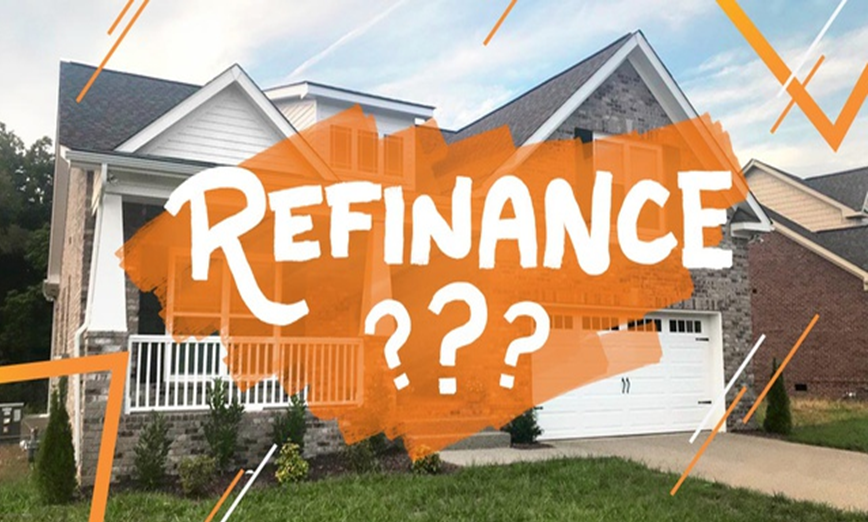Refinansiere: Reasons to Refinance a Property
It makes a lot of sense to remortgage a property when it will save owners a lot of money or make paying monthly bills a lot easier. Some experts suggest that property owners should only remortgage their homes when they can minimize their interest rate (IR), shorten the debenture term, or both.
This advice is not always the right advice. Some property owners may need short-term relief from a much lower monthly payment, even if this means hitting the reset button and starting over with a new thirty-year debenture. Remortgaging, also can help property owners access the equity in their homes or get rid of a Federal Housing Administration debenture and its monthly payment insurance premiums.
How Do These Things Work?
When people refinance their housing loans, they get a new credit to pay off their existing ones. It works like getting a housing debenture to purchase a home. Individuals will be free from tons of stress of moving and property purchasing, and there is less pressure to close by a particular date. Furthermore, if individuals regret their decision, they have until twelve midnight of the third business day after their debenture closes to cancel the transaction.
From 2019 to 2020, the average time to remortgage a traditional housing loan ranged from thirty-eight to forty-eight days. When IRs drop and most property owners want to remortgage, lending firms get pretty busy, and refinancing a credit can take a lot longer. Refinancing a VA or FHA debenture can also take up weeks longer compared to traditional refi.
To find out more about the 2008 housing crisis, check out this site for info.
When Remortgaging a House Debenture Makes a Lot of Sense
This thing can minimize a person’s monthly home payment by reducing their IR or increasing a credit term. It also can lower the long-run interest costs through lower rates, shorter duration, or both. It also can help individuals’ rod of their loan insurance.
Closing costs like origination fees, title insurance charges, appraisal fees, or credit report charges are always crucial factors in deciding whether to do this process or not. These costs usually amount to two to six percent of the amount the owner is borrowing.
To calculate break-even points where their savings from lower IRs exceed their closing costs, people will need to know the debenture’s closing cost. They can calculate these points by dividing their closing costs by their monthly savings from new payments.

Break-even point on a thirty-year loan
A break-even point of twenty-five months is manageable, and fifty might also be fine, but seventy-five months is pretty long. There is a good chance that property owners will remortgage again, even sell their homes in the next six or seven years. Between 1994 and 2020, the median number of years a property owner has kept mortgages before refinancing is three years and six months.
If property owners think their new debenture will be their last, they need to make sure to account for the additional years of IR they will be paying. For instance, if they have twenty-seven years left and they are starting over with a thirty-year refi, that is additional years of interest, and their break-even point is much longer. Now let’s discuss the most common reasons why homeowners remortgage their loans.
Visit sites such as https://www.søkrefinansiering.com for details about remortgaging.
Grabbing lower interest rates
When market IRs drop, doing this process to get lower IRs can lower the homeowner’s monthly mortgage payment, lower their total IR payments, or both. Another thing that can help lower the homeowner’s monthly payment is paying IR on smaller principal amounts, possibly with a longer-term length.
In the Q1 of 2020, which includes pre-pandemic refinance activities, more or less 50% of homeowners who refinanced their mortgage maintained their current balance or increased their principal balance by less than five percent (by remortgaging their closing costs).
One of the most common choices available is a term-and-rate refinance process. Higher credit scores will help individuals get better IRs on their loans. To get the best possible rate, individuals will need a score of at least 760. Almost three in four property owners who remortgaged in 2020 had scores of at least 750. The average score is 763. Bringing funds to closing might also provide individuals a lower IR or allow them to avoid PMI or Private Mortgage Insurance. At least 3% of borrowers did this process during Q1 of 2020.

Refinancing to access home equity
In Q1 of 2020, at least 40% of all remortgaged loans involved an increased balance by at least five percent, indicating property owners took money out or financed closing costs. While the rates on taking out cash can be higher compared to term-and-rate refi rates, it is still the cheapest way to borrow funds. Homeowners can access their property’s equity through cash-out refinances if they will have 20% or more equity remaining after their transaction. Here is a good example.
Term-and-Rate versus cash-out refinance
If the homeowner’s goal is to get money and not to lower their IR or change the term of their debenture, a line of credit (LOC) or property equity loan may be the best and less expensive option compared to closing costs on a money-out refi.
Refinance to Get Shorter Debenture Terms
If a person refinances from a thirty-year to a fifteen-year housing debenture, their monthly payment will usually increase. But not only is the IR on fifteen-year debenture lower, shaving a couple of years off the mortgage will mean paying less IR overtime.
The savings from shorter terms can be beneficial if homeowners do not take the loan interest deduction on their tax returns. With that being said, with IRs so low, some homeowners prefer to spend a couple of years paying their properties, so they have more money to invest at higher rates and more years for their earnings to compound.
Before the pandemic, at least 70% of borrowers remortgage from a thirty-year fixed-rate home debenture into the same loan type. Another 15% went from thirty-year to a fifteen-year fixed. And at least 7% went from a thirty-year to a twenty-year fixed.

